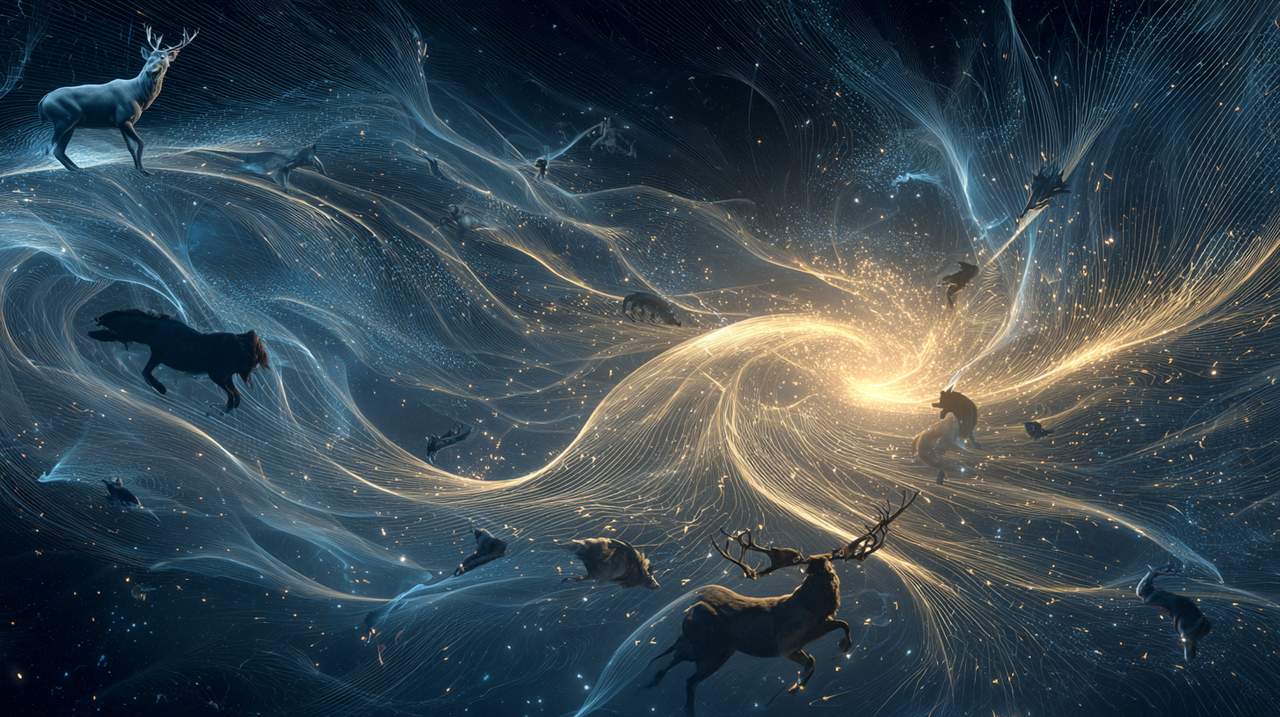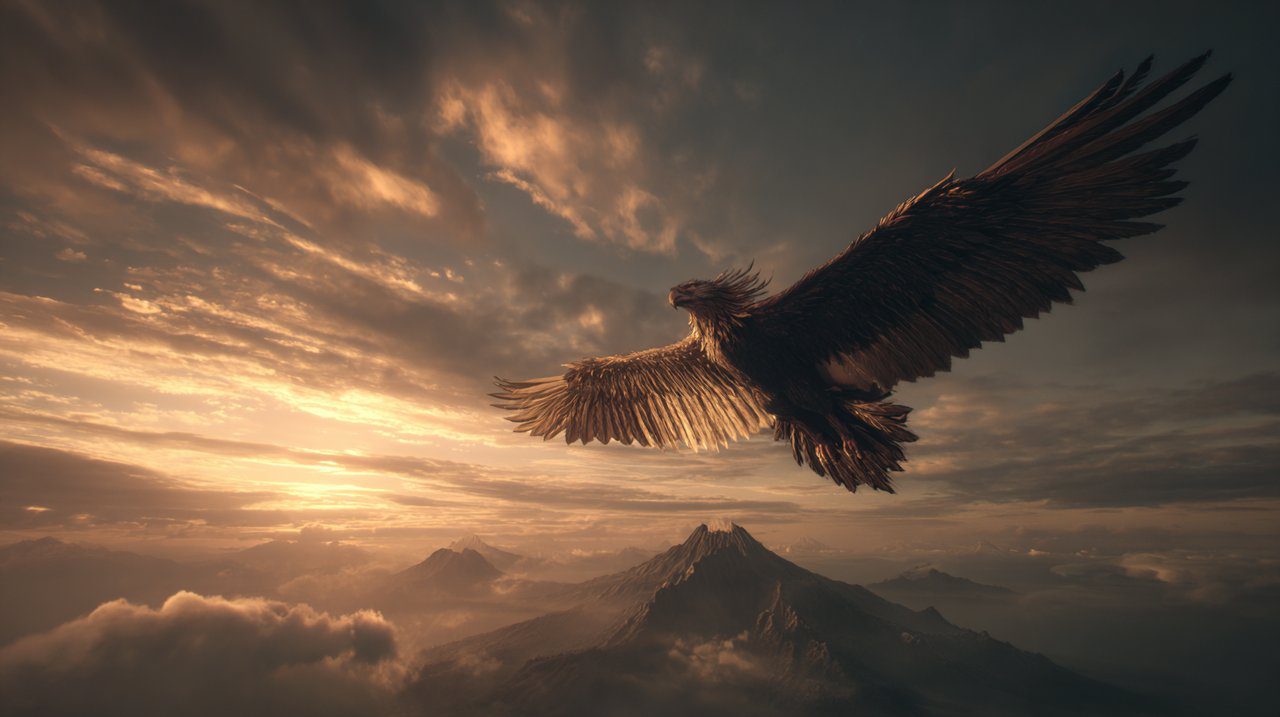The Silent Guides: Animals and Mythical Creatures in Buddhist Symbolism
Have you ever wondered why animals and mythical creatures hold such profound and sacred roles in Buddhism? It might seem counterintuitive for a path focused on transcending worldly attachments. Yet, their deep integration points to a much richer cosmic understanding and offers hidden spiritual insights, guiding us toward ultimate liberation.

The Cosmic Menagerie: Why Animals Matter in Buddhist Cosmology
Cycles of Samsara: Animals as Mirrors of Karma
In Buddhist cosmology, all sentient beings are interconnected, caught in the cycle of rebirth known as samsara. Animal realms are not random; they represent various states of existence, often serving as a clear reflection of the consequences of past actions, or karma.
These forms act as powerful reminders of life’s impermanence and the deep impact our choices have. For instance, being reborn as an animal might be seen as experiencing the karmic result of past ignorance or aggression. It’s a vivid lesson in cause and effect.
Interconnectedness: A Shared Path to Awakening
Buddhism emphasizes the fundamental unity of all life, highlighting that every being—from the smallest insect to the largest creature—possesses the inherent potential for awakening. Animals aren’t separate; they are vital threads in the same intricate tapestry of existence.
This perspective cultivates boundless compassion and underscores the profound idea that Buddha-nature resides within every sentient form. Their presence in the teachings beautifully illustrates a universal journey towards enlightenment, shared across all species.
Guardians, Teachers, and Guides: Unpacking Sacred Symbolism
Beyond their role in samsara, many creatures serve as powerful symbols, embodying specific virtues and aspects of the spiritual journey. Let’s explore some of the most significant:
The Elephant: Strength, Wisdom, and Mental Discipline
The elephant, with its immense physical power yet gentle demeanor, symbolizes profound strength and steadfastness. Initially, it represents the untamed mind—powerful but undirected.
Through careful discipline, much like training a wild elephant, the mind transforms into a powerful vehicle for spiritual progress. It teaches us the mental fortitude needed for deep meditation and the unwavering pursuit of wisdom.
The Lion: Royal Power and the Buddha’s Roar
Universally, the lion signifies royalty, fearlessness, and noble power. In Buddhism, the Buddha himself is revered as the ‘Lion of the Shakyas’, a title that speaks volumes.
His teachings are often compared to a “lion’s roar”—a sound that dispels all ignorance and falsehood with an unshakeable truth. The lion truly embodies the triumph of Dharma over delusion and the courage required to walk the path to enlightenment.
The Naga: Protectors of Dharma and Hidden Wisdom
Nagas are powerful, serpent-like beings, often linked to water, hidden treasures, and the earth itself. They are deeply respected as Dharma protectors and guardians of sacred Buddhist texts and ancient wisdom.
One famous story tells of a Naga king who sheltered the Buddha from a fierce storm during his meditation. They symbolize the deep, often unseen forces that vigilantly protect spiritual truths, reminding us that wisdom can be found in unexpected places.
The Garuda: Freedom from Attachment and Samsara
The Garuda is a magnificent, mythical bird, often depicted as the sworn rival of the Nagas. It possesses immense power and the remarkable ability to soar effortlessly above all obstacles.
This creature beautifully symbolizes freedom from attachment and the ultimate liberation from the cycle of samsara. The Garuda’s victory over the Nagas represents the triumph of wisdom over the “three poisons” of greed, hatred, and ignorance that bind us.

Other Key Creatures: Birds, Monkeys, Deer
- Birds: They represent freedom, spiritual aspiration, and our ability to transcend earthly concerns.
- Monkeys: Often symbolizing the restless, ‘monkey mind’, they highlight the ongoing challenge of mental discipline and focus.
- Deer: Embodying gentleness, purity, and peace, deer are famously associated with the Deer Park, where the Buddha delivered his very first sermon.
Echoes of Enlightenment: Stories That Shape Understanding
These creatures aren’t just static symbols; they come alive in powerful narratives that have shaped Buddhist understanding for centuries.
Jataka Tales: Lessons from the Buddha’s Past Lives
Jataka tales are a collection of captivating narratives recounting the Buddha’s previous incarnations, often as animals. These are far more than simple fables; they are profound teachings.
They vividly illustrate core Buddhist virtues such as compassion, generosity, and self-sacrifice, demonstrating the gradual evolution of a Bodhisattva’s character through countless lifetimes. Think of the tale of the compassionate hare who sacrificed himself for a hungry ascetic—a powerful lesson in selfless giving.
Mythological Narratives: Cosmic Battles and Spiritual Journeys
Beyond the Jataka tales, Buddhist mythology is rich with narratives involving divine beings, demons, and other mythical creatures. These stories often depict cosmic struggles that profoundly mirror our own internal spiritual conflicts.
Such narratives illustrate the triumph of wisdom over delusion and the arduous, yet ultimately rewarding, journey towards enlightenment. They personify abstract spiritual challenges, making them incredibly relatable and impactful for practitioners.
Beyond the Physical: Integrating Symbolism into Practice
So, how do these ancient symbols translate into daily practice and spiritual growth?
Art, Ritual, and Meditation: Living Symbols
Buddhist animal and mythical creature symbolism extends far beyond stories, manifesting in tangible forms. You’ll find them prominently featured in temple architecture, intricate thangka paintings, and sacred ritual objects.
These visual representations serve as powerful tools for contemplation and meditation practices. They gently remind practitioners of specific virtues to cultivate or challenges to overcome, guiding their inner reflection and deepening their spiritual journey.

Personal Reflection: Finding Your Own Sacred Animal Guide
Understanding these ancient symbols encourages a deeper, more personal engagement with Buddhist teachings. Taking time to reflect on which creatures resonate most with you can offer unique insights into your own spiritual path.
These symbols can powerfully guide your personal spiritual inquiry, inspiring you to cultivate qualities like the elephant’s steadfastness or the lion’s courage in your daily life. They become personal anchors, offering comfort and direction in your quest for awakening.
From the smallest insect to the grandest mythical beast, animals and creatures in Buddhism are truly far more than mere decorative elements. They are profound teachers, living allegories of the Dharma, and trusted guides on the path to awakening. By attuning ourselves to their wisdom, we can deepen our understanding of Buddhist truths and illuminate our own spiritual journey.
As you navigate your own spiritual landscape, consider which of these ancient symbols speaks most profoundly to you. Their silent wisdom, woven into the very fabric of Buddhist thought, offers powerful pathways to self-discovery and enlightenment.
Further exploration into Buddhist art, Jataka literature, or contemplative practices can reveal even deeper layers of these sacred connections. What animal wisdom will you discover on your path?
💡 الأسئلة المتكررة
In Buddhist cosmology, animal realms are not random but serve as a clear reflection of the consequences of past actions (karma). Being reborn as an animal can be seen as experiencing the karmic results of past ignorance or aggression, acting as a vivid lesson in cause and effect and highlighting life's impermanence.
The Elephant symbolizes profound strength, steadfastness, and the untamed mind that can be transformed through discipline into a powerful vehicle for spiritual progress and wisdom. The Lion embodies royalty, fearlessness, and the Buddha's 'lion's roar,' representing the triumph of truth over ignorance and the courage needed on the path to enlightenment.
Nagas are powerful, serpent-like beings who act as Dharma protectors and guardians of sacred texts and wisdom, often associated with water and hidden treasures. The Garuda, a mythical bird and rival of the Naga, symbolizes freedom from attachment and liberation from the cycle of samsara, representing the triumph of wisdom over greed, hatred, and ignorance.
Jataka tales recount the Buddha's past lives, often as animals, to illustrate core Buddhist virtues like compassion and generosity. Mythological narratives involve divine beings and mythical creatures in cosmic struggles that mirror internal spiritual conflicts, personifying abstract challenges and illustrating the journey towards enlightenment.
These symbols are integrated through art, ritual, and meditation, appearing in temple architecture, paintings, and sacred objects. They serve as tangible reminders for practitioners to cultivate specific virtues or overcome challenges, guiding inner reflection and deepening their spiritual journey. Personal reflection on which symbols resonate can also offer unique insights into one's spiritual path.







